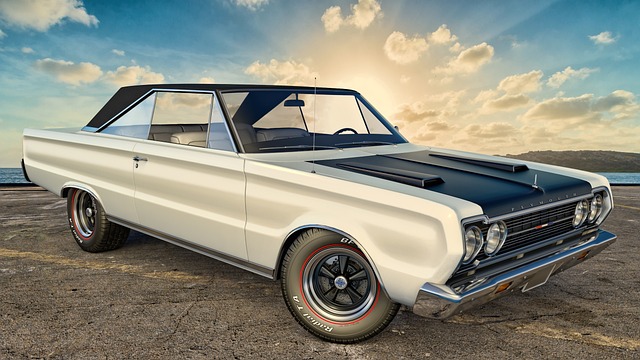Vin verification (VIN checking) is a critical process ensuring vehicle authenticity in California. Every car has a unique 17-character VIN that reveals manufacturing details, service records, and past accidents. The California DMV verifies VINs against databases to confirm ownership history, maintenance records, and recall notices, providing transparency for buyers and owners. To conduct a VIN verification, retrieve the VIN from the vehicle, use an official DMV online tool, check for recalls and liens, and ensure documentation accuracy to avoid issues during registration or title transfer.
“Uncover the essential process of VIN verification, a crucial step in ensuring vehicle authenticity. This comprehensive guide explores California DMV’s role in validating vehicle histories, offering a clear roadmap for the entire procedure. From understanding the basics of Vehicle Identification Numbers (VIN) to addressing common issues, you’ll learn how to navigate the steps involved efficiently. Discover why a vin verified history is vital for buyers and sellers, enhancing trust and transparency in the automotive market.”
- Understanding VIN Verification: The Basics
- California DMV's Role in Vehicle History Reporting
- Steps Involved in Conducting a VIN Verification
- Common Issues and How to Resolve Them
Understanding VIN Verification: The Basics

Vin verification, or VIN checking, is a crucial process in ensuring the authenticity and history of a vehicle. Every vehicle has a unique Vehicle Identification Number (VIN), which acts as its fingerprint. This 17-character code provides detailed information about the car’s manufacturing details, specifications, and even service records. A VIN verified vehicle gives owners and potential buyers peace of mind, assuring them that the car is genuine, hasn’t been reported stolen, and has no outstanding issues.
This process involves cross-referencing the VIN with various databases to gather essential data. California DMV guidelines play a significant role in this verification, ensuring vehicles on their roads meet safety and legal standards. By checking against these databases, individuals can uncover past accidents, ownership history, maintenance records, and even recall notices, making informed decisions about purchasing or selling a vehicle.
California DMV's Role in Vehicle History Reporting

The California Department of Motor Vehicles (DMV) plays a pivotal role in ensuring the accuracy and transparency of vehicle history, which is crucial for consumers and industry professionals alike when it comes to buying and selling vehicles. One of its key responsibilities is the verification of Vehicle Identification Numbers (VIN), a unique code that serves as a fingerprint for each car. The DMV’s VIN verification process involves cross-referencing the provided information against their extensive databases to establish the vehicle’s history, including ownership records, accident reports, and any reported damage or odometer rollback.
By facilitating this process, the California DMV empowers buyers and sellers with valuable insights into a vehicle’s past, helping them make informed decisions. A vin verified vehicle report is a comprehensive document that outlines the vehicle’s journey, ensuring potential issues are uncovered and providing peace of mind to those involved in the transaction. This service is not only beneficial for consumers but also supports the overall integrity of California’s automotive market by deterring fraud and promoting ethical practices.
Steps Involved in Conducting a VIN Verification

To conduct a Vehicle Identification Number (VIN) verification, follow these key steps. First, obtain the vehicle’s VIN from its registration or by manually checking the label on the driver’s side door jamb. Once you have the VIN, use an official California DMV online tool to cross-reference it against their records. This process ensures that the vehicle matches the information provided on its title and registration documents.
Next, verify the vehicle’s history using the same online platform. This step includes checking for any outstanding issues like recalls, liens, or reported accidents, which can affect the car’s legal status and value. Additionally, confirm the vehicle’s eligibility for registration or title transfer by ensuring it meets all safety and emission standards set by the DMV. A successful VIN verification ensures that the vehicle is safe to operate, has a clear ownership history, and complies with California’s regulations.
Common Issues and How to Resolve Them

Many vehicle owners in California might encounter challenges when it comes to VIN verification, a crucial step in ensuring the authenticity and history of a car. Common issues include missing or inaccurate documentation, discrepancies between the vehicle’s identification number (VIN) and available records, and issues related to previous owners’ record-keeping.
To resolve these problems, it’s essential to double-check all paperwork, including title documents, registration records, and insurance information. Cross-referencing data from multiple sources can help verify the VIN. If discrepancies are found, contacting the previous owner or dealer for clarification is advisable. Additionally, utilizing online resources provided by the California DMV can aid in clearing up any inconsistencies and ensuring a smooth vin verification process.
In conclusion, understanding California DMV’s VIN verification guidelines is essential for ensuring vehicle history accuracy. By following the steps outlined in this article, including proper documentation, data validation, and addressing common issues, individuals can efficiently conduct a vin verified process. This ensures peace of mind when purchasing or selling vehicles, fostering trust and transparency in the automotive market.
